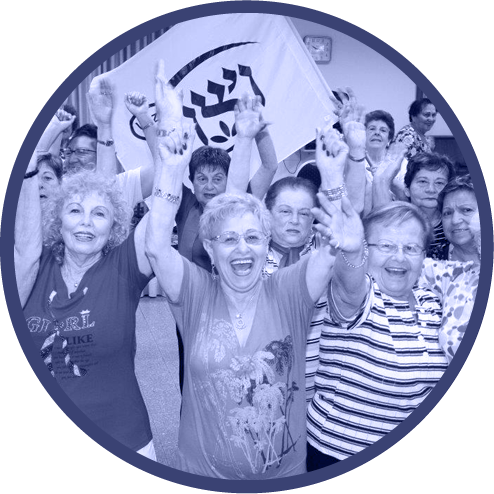
Our History
The Birth of our Movement
“It was in the Hotel Russell in London that WIZO was born”
Before there was a WIZO, there was “Western Women’s Tent” – an intriguing name for the first Women’s Zionist Society in England, Established in 1891. The aim of the group was the establishment of a working community of Jews in Palestine. Later came the English Zionist Federation, founded in 1897. This had a ladies committee that included Rachel Sieff.
Rebecca Dora Sieff was born in 1890 in Manchester, the daughter of Michael and Hannah Marks. She attended Manchester High School for girls and continued on to Manchester University where she studied English literature.
In 1910 she married Israel Sieff, an ardent Zionist. They both formed a close bond with Chaim Weizmann who was also studying at Manchester University.
For the next 8 years Rebecca was involved in developing Zionist support groups and a broader Zionist platform for women. The Federation of Women Zionist of the United Kingdom (FWZ) was formed, the forerunner of WIZO.
AFTER World War 1, Rebecca accompanied her husband to Palestine. He had been appointed political Secretary of the first Zionist Commission to Palestine headed by Dr Weizmann. There she observed the dire social and economic condition of the Jewish Community and was appalled by what she found.
On returning to England she was determined to speed the implementation of a plan for a new world movement of Jewish Women. She called for volunteers and delegates from around the globe to attend the first International Women’s conference. The historic date of the WIZO founding conference was the 11th July 1920. Rebecca Sieff was elected President.
In Australia
The first WIZO group was established in Melbourne in 1935 followed a year later by Sydney. Soon after that and prompted by the visit of an emissary from World WIZO, the Australian WIZO Federation came into being. Women Zionists actively began undertaking fundraising for ‘child welfare work’ in Israel.
The first WIZO publication was organized by NSW President Reike Cohen in Sydney in 1935, a monthly journal with a circulation of 350, called “Ivriah”. Ruby Rich-Shalit was the first Federal President from 1937-1940.
The movement continued to grow and thrive. Work during the war years focused on the plight of the European Jewry. Whilst Australia was at some geographic distance from the horrors of Nazism, the women in WIZO made every effort to assist wherever they could. Many refugees from war torn Europe travelled to Australia to make it their home. They formed the basis of the most committed WIZO women throughout Australia.
Following World War II, WIZO in Australia became very involved in the plight of Russian Jewry who were not able to travel to Israel. They were known as Refuseniks. The most well known of these are Ida Nudel and Natan Sharansky. Letters and petitions were sent to the Russian Embassy in Canberra and a mission of WIZO Women travelled to Canberra to protest the treatment of Russian Jewry.





